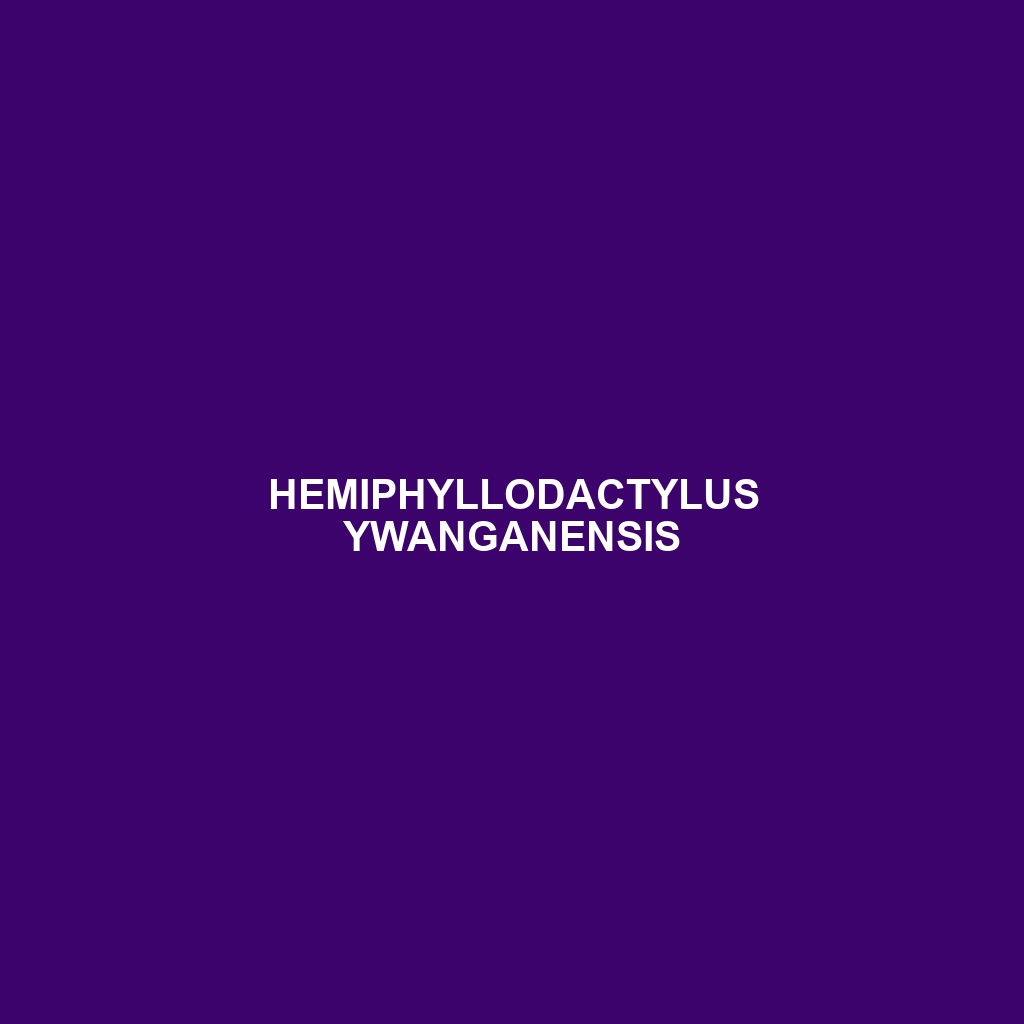Common Name
Hemiphyllodactylus ywanganensis
Scientific Name
Hemiphyllodactylus ywanganensis
Habitat
Hemiphyllodactylus ywanganensis, a species of gecko endemic to Myanmar, primarily inhabits tropical and subtropical moist forest regions. These geckos thrive in environments characterized by high humidity and dense vegetation, commonly found in rainforests. The species prefers areas with ample leaf litter and undergrowth, which provide shelter and hunting grounds. Rainforests serve as ideal habitats, with their complex layers offering various microclimates essential for thermoregulation and protection from predators. Additionally, Hemiphyllodactylus ywanganensis can occasionally be spotted in nearby shrubby areas where the transition from forest to open land occurs. Their presence in these habitats highlights the importance of forest conservation in maintaining biodiversity and ecosystem health.
Physical Characteristics
Hemiphyllodactylus ywanganensis exhibits several distinctive physical traits that aid in its identification. This species typically ranges from 7 to 10 centimeters in length. Its slender body is complemented by a long, narrow tail which facilitates its agile movements through foliage. The coloration varies from dark brown to grayish tones, often with lighter mottling or spots, providing excellent camouflage against their natural environment. Notably, they possess large, round eyes that enhance nocturnal vision, while their sticky toe pads enable climbing and adherence to various surfaces, making them adept at navigating their arboreal habitats. These unique features not only define their appearance but also serve critical functions for survival in the wild.
Behavior
Hemiphyllodactylus ywanganensis exhibits predominantly nocturnal behavior, making it active during the night when it hunts for food and engages in social interactions. During the day, these geckos often seek refuge in foliage or crevices, minimizing exposure to potential predators. Their social behavior includes subtle displays during mating rituals, where males may exhibit head-bobbing movements to attract females. Additionally, they showcase territorial instincts, frequently vocalizing or engaging in displays of dominance when confronting other males. Such behaviors not only illustrate their social complexity but also highlight the importance of communication in their reproductive success.
Diet
As an insectivore, Hemiphyllodactylus ywanganensis primarily feeds on a varied diet consisting of insects such as crickets, moths, and beetles, which they capture via an agile hunting strategy. Their hunting methods involve ambushing prey from concealed positions, utilizing speed and their adhesive toe pads to secure themselves on vertical surfaces during the chase. This diet plays a crucial role in controlling insect populations within their habitats, contributing to the ecological balance. Understanding the feeding patterns of this species sheds light on their role in the ecosystem as both predator and prey.
Reproduction
The reproductive cycle of Hemiphyllodactylus ywanganensis is fascinating and involves multiple stages. Mating typically occurs during the wetter months when environmental conditions enhance survival probabilities for the offspring. After a brief courtship display, females lay clutches of 1 to 2 eggs in hidden locations, such as under leaf litter or within tree hollows. The incubation period ranges from 30 to 60 days, depending on temperature and humidity levels. Parental care is absent in this species, with offspring being relatively independent upon hatching. Understanding these reproductive behaviors helps illuminate the species’ lifecycle and future population sustainability.
Conservation Status
Currently, Hemiphyllodactylus ywanganensis is categorized as vulnerable due to habitat loss from deforestation and urbanization in Myanmar. The destruction of its rainforest habitats poses significant threats to its survival and breeding success. Conservation efforts are underway, including habitat protection and restoration initiatives aimed at preserving the natural ecosystems these geckos depend on. However, challenges such as illegal logging and land conversion for agriculture continue to jeopardize their existence. Ongoing research and monitoring are vital to ensure the preservation of this unique gecko species.
Interesting Facts
Hemiphyllodactylus ywanganensis possesses a unique adaptation known as autotomy, allowing it to shed its tail when threatened. This process can distract predators, giving the gecko a chance to escape. Remarkably, the tail can regenerate over time, although the new tail may differ in appearance from the original. Additionally, this species has been observed engaging in social interactions that highlight complex behavioral patterns, including communal roosting in high-humidity areas that enhance survival during harsh conditions.
Role in Ecosystem
In the ecosystem, Hemiphyllodactylus ywanganensis plays a vital role as both a predator and prey species. By controlling insect populations, they assist in maintaining the ecological balance within their rainforest habitat, serving as natural pest controllers. Conversely, these geckos are a food source for various predators, including birds and larger reptiles, contributing to the food web’s complexity. As a species sensitive to environmental changes, Hemiphyllodactylus ywanganensis can serve as an indicator of ecosystem health, making their conservation even more critical.
